Topics
Category
Era
Dimitri Mitropoulos at the Minneapolis Symphony Orchestra, 1937–1949
Under the leadership of Greek conductor Dimitri Mitropoulos, the Minneapolis Symphony Orchestra (later renamed the Minnesota Orchestra) ranked among the best symphonic orchestras in the nation. Critics and audiences both lauded the ensemble, especially for its contemporary music program and its extensive national tours.
On January 2, 1936, the popular conductor of the Minneapolis Symphony Orchestra, Eugene Ormandy, abruptly resigned to become co-conductor of the Philadelphia Orchestra. With the 1935–36 symphony season well underway, the Minneapolis group’s board of directors decided to organize the 1936–37 season as a showcase of the world’s most talented emerging conductors and hire the best.
A year later, and halfway through the line-up of conductors, a maestro little known in the Midwest arrived in Minnesota to present five performances during a two-week residency. From the moment Dimitri Mitropoulos loped across the stage and took his place on the podium, he became the city’s favorite. At the end of his first concert, typically reserved Minneapolis concertgoers were on their feet, shouting bravos and asking, “Can we get him?” Eighteen days later, during the intermission of another candidate’s concert, the orchestra announced that Mitropoulos had accepted a two-year appointment.
The following January, Mitropoulos arrived in Minneapolis, moving into a small University of Minnesota dormitory room just steps away from the orchestra’s home in Northrop Auditorium. His energetic style of directing won rave reviews from the musicians and the orchestra’s patrons. He conducted with his whole body, leaping, dancing, and punching the air. His concerts were as much visual as aural. One music critic described him as leading the orchestra “like a man possessed.” Other critics called his conducting choreographic, even acrobatic. Within the first few months of his tenure, Mitropoulos featured some of the nation’s most popular guest soloists, including Artur Rubinstein, Marian Anderson, and Jascha Heifetz. Northrop Auditorium’s 5,000 seats were consistently sold out, earning Minneapolis a reputation as “the biggest weekly symphonic audience in the US.”
Throughout World War II, orchestra concerts, like most public gatherings, were infused with patriotic messages, music, and symbolism. The Northrop stage was set with a service banner bearing stars representing the musicians on active military duty. Concerts opened with Mitropoulos leading the audience in singing the National Anthem. Programs highlighted works by Allied composers along with traditional and contemporary American music. Not all ticket holders appreciated the atonal, contemporary pieces, but the conductor insisted that his responsibilities included introducing his audience to new music that would become the classics of the twentieth century.
To boost public spirit, the orchestra scheduled extra wartime performances: programs for soldiers at Fort Snelling, pension concerts for retired musicians, and charity concerts for the Red Cross and other local organizations. A new series of Sunday afternoon, one-hour “Twilight Concerts” was introduced for younger audiences. While other national orchestras were canceling or reducing touring dates during the war, the Minneapolis Orchestra expanded its long-standing schedule of off-season tours.
Season by season, Mitropoulos’s reputation grew as a point of Minnesota pride. He was generous with his time, working with high school and college orchestras, and he was known for his philanthropy. A devout ascetic, he lived a simple life and gave away most of his salary to support university students, purchase new instruments for needy musicians, and lavishly tip waiters and cab drivers. And he continued to promote new compositions, especially the works of local composers and Hamline University instructors John Verrall and Ernst Krenek.
Mitropoulos was frequently asked to serve as guest conductor for the country’s major orchestras, taking him away from Minneapolis for extended periods. The Minneapolis Orchestra opened its 1948–49 concert season without Mitropoulos, who was conducting the New York Philharmonic for eight weeks.
Mitropoulos’s national attention sparked rumors that he would soon be lured away by one of the nation’s most prestigious orchestras. That call came at the end of December 1948. Front page headlines in Minneapolis newspapers announced that the maestro would be leaving Minnesota to become co-conductor of the New York Philharmonic, sharing the job with Leopold Stokowski. A year later, he was named the chief conductor of the New York orchestra, a position he held until 1958. His final performance in Northrop Auditorium was March 18, 1949. His successor, Antal Doráti, led his first concert as director of the Minneapolis Symphony on October 21, 1949.
Bibliography
“Fans Save Symphony for City.” Minneapolis Journal, February 1, 1939.
“Greek Composer Hopes to Fall Down a Mountain.” Boston Globe, January 18, 1936.
“Mitropoulos Praised as ‘Music Capital’ Builder.” Minneapolis Star–Journal, February 14, 1946.
Sherman, John K. “Debate Rages on Issue of New Music at Concerts.” Minneapolis Star–Journal, February 15, 1942.
⸻ . Music and Maestros: The Story of the Minneapolis Symphony Orchestra. Minneapolis: University of Minnesota Press, 1952.
⸻ . “‘Travelingest’ Symphony Reaches Chicago on First Stop of Tour.” Minneapolis Sunday Tribune, January 30, 1944.
“‘Three Bs’ on Opening Program of Symphony.” Minneapolis Sunday Tribune, October 22, 1944.
“Time Magazine Has Praise for Minneapolis’ Mitropoulos.” Minneapolis Star–Journal, January 2, 1941.
Trotter, William R. Priest of Music: The Life of Dimitri Mitropoulos. Portland, OR: Amadeus Press, 1995.
Related Resources
Primary
Allen, David. “A Monkish Conductor Who Expressed His Faith Through Music.” New York Times, April 29, 2022.
“Bravos Accorded Greek Conductor at Concert Here.” Boston Globe, January 25, 1936.
“A Day with Mitropoulos and a Blood Donor Unit.” Minneapolis Morning Tribune, August 8, 1943.
Houk, Norman C. “Music: Record Crowd Thrills to Symphony Opening.” Minneapolis Morning Tribune, October 27, 1945.
“Minneapolis Symphony in Chicago Today.” Minneapolis Morning Tribune, January 23, 1949.
Ueland, Brenda. Mitropoulos and the North High Band. New York: G. P. Putnam’s Sons, 1938 and 1939. Published by the Schubert Club, St. Paul, Minnesota, 1983.
Secondary
Downes, Olin. “Mahler Symphony Introduced Here.” New York Times, December 12, 1947.
Houk, Norman C. “Music: Mass Choir, Symphony Draw Crowd of 8,000.” Minneapolis Morning Tribune, April 4, 1946.
“Mitropoulos’ Death Brings Tributes.” Minneapolis Morning Tribune, November 20, 1960.
Sargeant, Winthrop. “Dimitri Mitropoulos: A Fabulous Greek with Monklike Habits Is Making Music History in Minneapolis.” Time, February 18, 1946.
Sherman, John K. “Boston Critic Foresees Greater Music Interest.” Minneapolis Star, June 30, 1940.
Web
“Mahler: Symphony No 1 ‘Titan’ First Recording (1940) Mitropoulos/Minneapolis.” Restoration Archive, YouTube, 47:45.
https://www.youtube.com/watch?v=XsluBuzXlLc
Minnesota Orchestra. “Our Story.”
https://www.minnesotaorchestra.org/about/our-story
“Music: Gifted Greek.” Time, January 6, 1941.
https://time.com/vault/issue/1941-01-06/page/36
Related Images
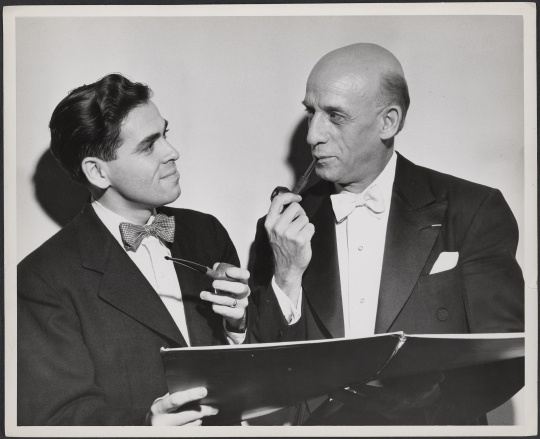
Dimitri Mitropoulos with a musician, ca. 1940
Holding Location
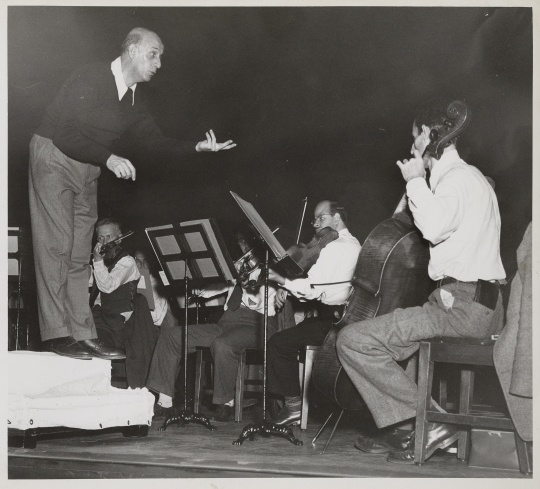
Dimitri Mitropoulos rehearsing the Minneapolis Symphony Orchestra
Holding Location
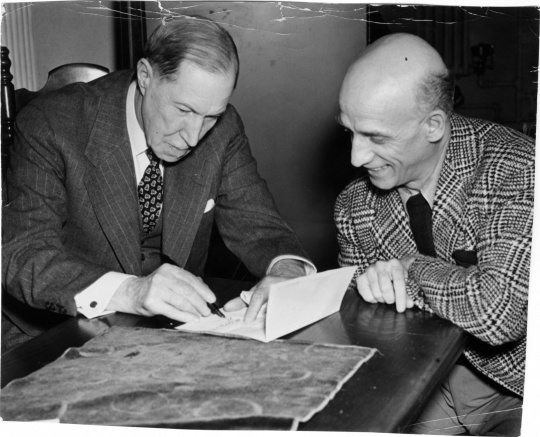
Dimitri Mitropoulos signing a contract with the Minneapolis Symphony Orchestra
Holding Location

Dimitri Mitropoulos becoming a US citizen
Holding Location
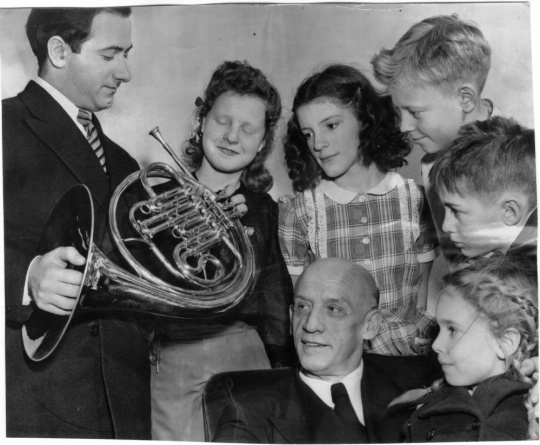
Dimitri Mitropoulos with sixth graders at a children’s concert
Dimitri Mitropoulos (seated, center) with sixth graders attending a children’s concert at the Minneapolis Symphony Orchestra. From the Minneapolis Daily Times, January 22, 1947.
Holding Location
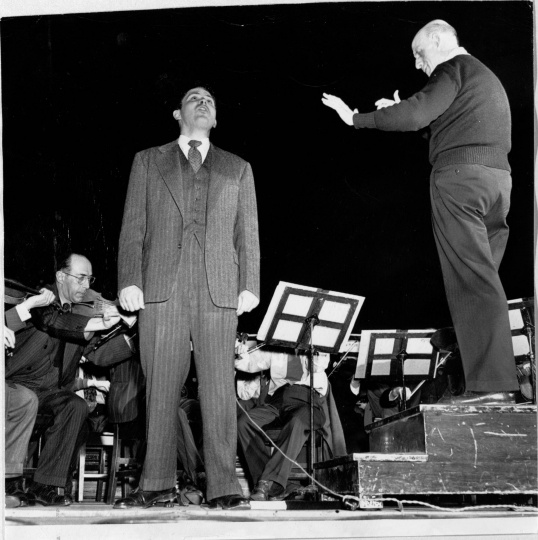
Dimitri Mitropoulos conducting a vocal soloist
Holding Location
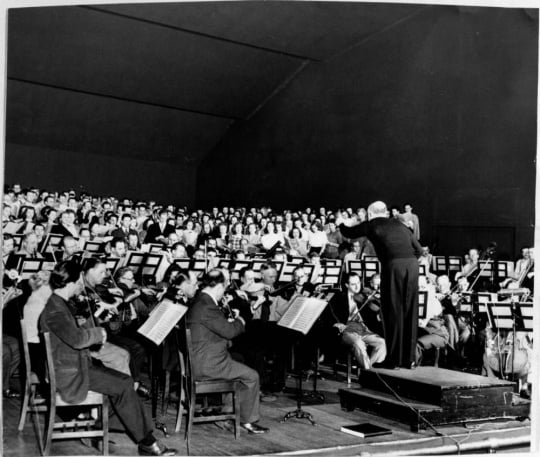
Dimitri Mitropoulos conducting the Minneapolis Symphony Orchestra
Holding Location
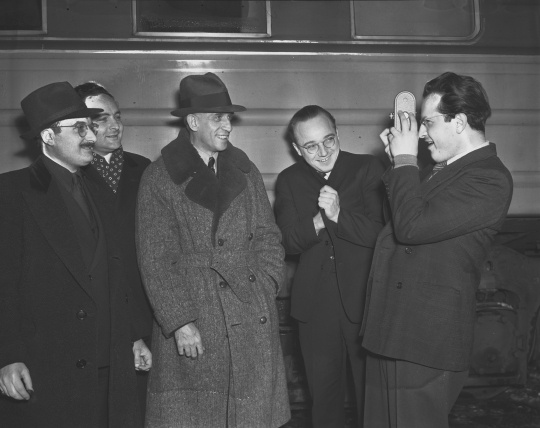
Members of the Minneapolis Symphony Orchestra prepare to go on tour
Holding Location
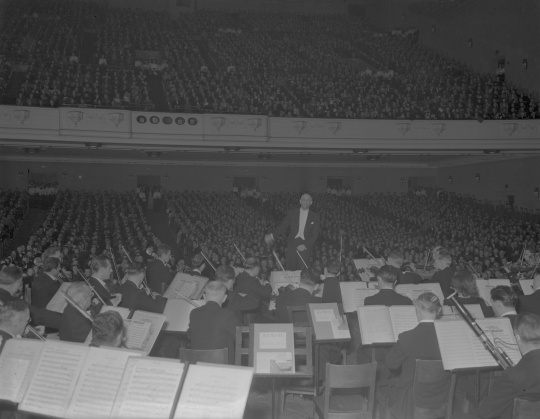
Dimitri Mitropoulos conducting the Minneapolis Symphony in performance
Holding Location
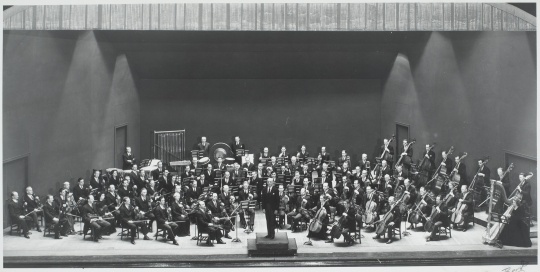
Dimitri Mitroupoulos on the conductor's podium with the Minneapolis Symphony Orchestra
Holding Location
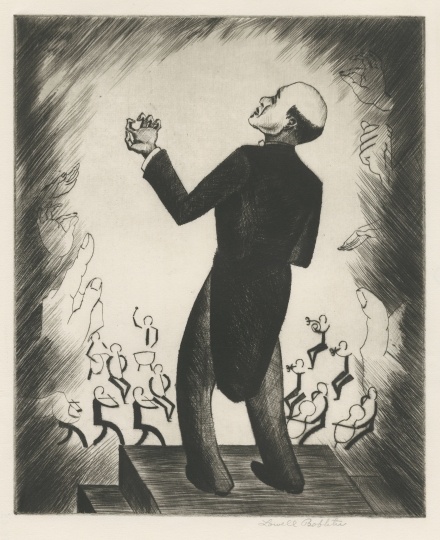
Illustration of Dimitri Mitropoulos conducting
Holding Location
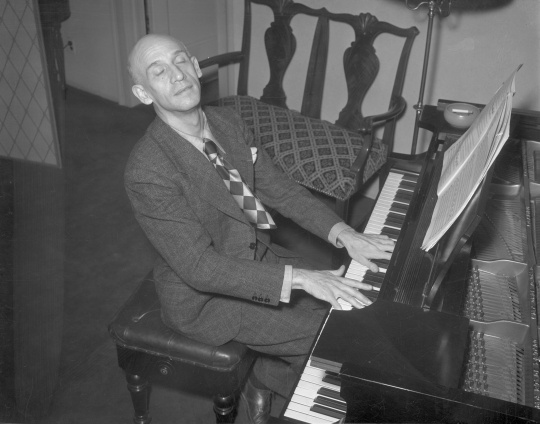
Dimitri Mitropoulos playing the piano
Holding Location
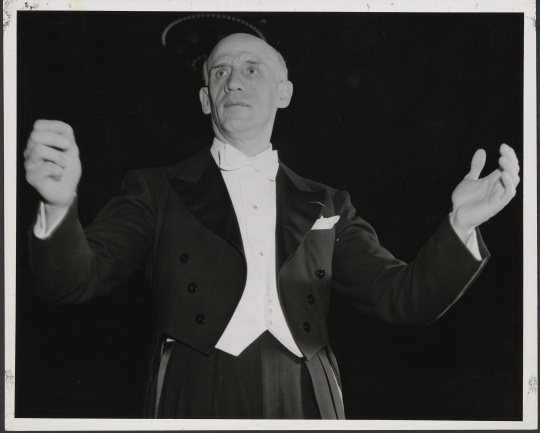
Dimitri Mitropoulos conducting, ca. 1945
Holding Location
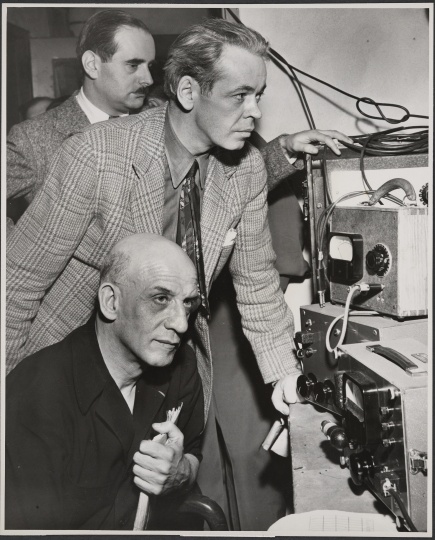
Dimitri Mitropoulos in a recording studio
Holding Location
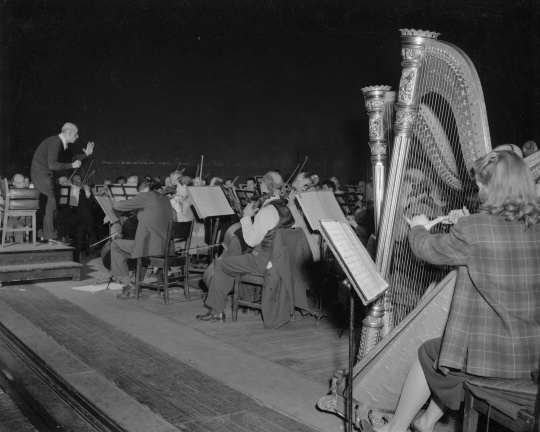
Dmitri Mitropoulos rehearsing the Minneapolis Symphony, 1948
Holding Location
Related Articles
Turning Point
In January 1939, the Orchestral Association of Minneapolis threatens to dissolve the Minneapolis Symphony Orchestra unless $25,000 is raised. A successful fund drive saves the orchestra, and the association signs a two-year contract extending Dimitri Mitropoulos’s appointment as conductor. He remains in the position until 1949.
Chronology
1896
1907
1924
1936
1937
1940
1943
1946
1946
1947
1948
1950
1958
1960
1967
Bibliography
“Fans Save Symphony for City.” Minneapolis Journal, February 1, 1939.
“Greek Composer Hopes to Fall Down a Mountain.” Boston Globe, January 18, 1936.
“Mitropoulos Praised as ‘Music Capital’ Builder.” Minneapolis Star–Journal, February 14, 1946.
Sherman, John K. “Debate Rages on Issue of New Music at Concerts.” Minneapolis Star–Journal, February 15, 1942.
⸻ . Music and Maestros: The Story of the Minneapolis Symphony Orchestra. Minneapolis: University of Minnesota Press, 1952.
⸻ . “‘Travelingest’ Symphony Reaches Chicago on First Stop of Tour.” Minneapolis Sunday Tribune, January 30, 1944.
“‘Three Bs’ on Opening Program of Symphony.” Minneapolis Sunday Tribune, October 22, 1944.
“Time Magazine Has Praise for Minneapolis’ Mitropoulos.” Minneapolis Star–Journal, January 2, 1941.
Trotter, William R. Priest of Music: The Life of Dimitri Mitropoulos. Portland, OR: Amadeus Press, 1995.
Related Resources
Primary
Allen, David. “A Monkish Conductor Who Expressed His Faith Through Music.” New York Times, April 29, 2022.
“Bravos Accorded Greek Conductor at Concert Here.” Boston Globe, January 25, 1936.
“A Day with Mitropoulos and a Blood Donor Unit.” Minneapolis Morning Tribune, August 8, 1943.
Houk, Norman C. “Music: Record Crowd Thrills to Symphony Opening.” Minneapolis Morning Tribune, October 27, 1945.
“Minneapolis Symphony in Chicago Today.” Minneapolis Morning Tribune, January 23, 1949.
Ueland, Brenda. Mitropoulos and the North High Band. New York: G. P. Putnam’s Sons, 1938 and 1939. Published by the Schubert Club, St. Paul, Minnesota, 1983.
Secondary
Downes, Olin. “Mahler Symphony Introduced Here.” New York Times, December 12, 1947.
Houk, Norman C. “Music: Mass Choir, Symphony Draw Crowd of 8,000.” Minneapolis Morning Tribune, April 4, 1946.
“Mitropoulos’ Death Brings Tributes.” Minneapolis Morning Tribune, November 20, 1960.
Sargeant, Winthrop. “Dimitri Mitropoulos: A Fabulous Greek with Monklike Habits Is Making Music History in Minneapolis.” Time, February 18, 1946.
Sherman, John K. “Boston Critic Foresees Greater Music Interest.” Minneapolis Star, June 30, 1940.
Web
“Mahler: Symphony No 1 ‘Titan’ First Recording (1940) Mitropoulos/Minneapolis.” Restoration Archive, YouTube, 47:45.
https://www.youtube.com/watch?v=XsluBuzXlLc
Minnesota Orchestra. “Our Story.”
https://www.minnesotaorchestra.org/about/our-story
“Music: Gifted Greek.” Time, January 6, 1941.
https://time.com/vault/issue/1941-01-06/page/36
















